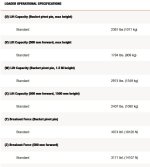Gonna guess you aren't mowing the entire lot weekly and maintaining a groomed lawn over the whole thing.
The terrain has as a lot do with mowing speed. If the land is real rough, you slow down a lot or it just beats the heck out of you - there is no suspension on a tractor like a car. Bigger machine will mow faster. Not just because it can pull a bigger mower, but the larger diameter tires can just bridge smaller ruts instead of dipping into them. Heavier machine and suspension seat help there too. But lots of obstacles to navigate and very uneven ground will be a much slower speed than say a golf course fairway.
While shopping, compare different suspension seat type options if your ground isn't very smooth. Adjustable air suspension seat makes a really big difference. Also note how much vibration you're feeling in the wheel, seat, floor at higher RPM. Many will be like sitting on a Harley at idle - you don't so much care about that if they smooth out real nice at higher rpm. But if during a little test run at PTO rpm and ground speed you think you'd want to mow at, note how different ones feel as far as the vibration getting transferred to you. Bad seat + lots of vibration + uneven terrain = you beat to death at end of day.
The lifting capacity mentioned above is good to look at too, especially if you know you need to lift something of a certain weight. IBC totes full of water in my case. Round bales common for others. If you have something like that, you need to test it on the machine. Comparing specs on paper is ballpark and they all do it a little different. At the pins vs 20" forward is a huge # difference on paper for 2 loaders that can do same thing. Lifting 3' off the ground vs full height are very different. Kubota sticks out as an example - for what I was looking at their measurements were 20" in front of pivot pins and to full height. That gave you a very realistic #. Others might calculate by figuring what theirs can lift at pins and just get it off the ground - not necessarily to full height which would make them look like they can lift 2x as much as the same size Kubota, but really can do about the same.

That's a random Kubota loader spec. Gives you lots of detail to compare and really know what it can do. Most will not give you all those #s. If you look at (w) there - 1.5 meters off ground at pivot pins that is a very big difference vs (v) max height, 20" forward of pivot pins. Some might only give you the equivalent of (w) and no other # so it makes it hard to compare on paper which one does what you want. Mine for example only lists weight to full height at pivot pins - leaving you to guess what that means for a load out on pallet forks or in the bucket or how much more can it lift just to carry position? That's an area where just putting brochure data in an excel spreadsheet doesn't do you much good.
So figure out what is important and then make sure you are comparing those aspects - and you are comparing apples:apples as you go along.

